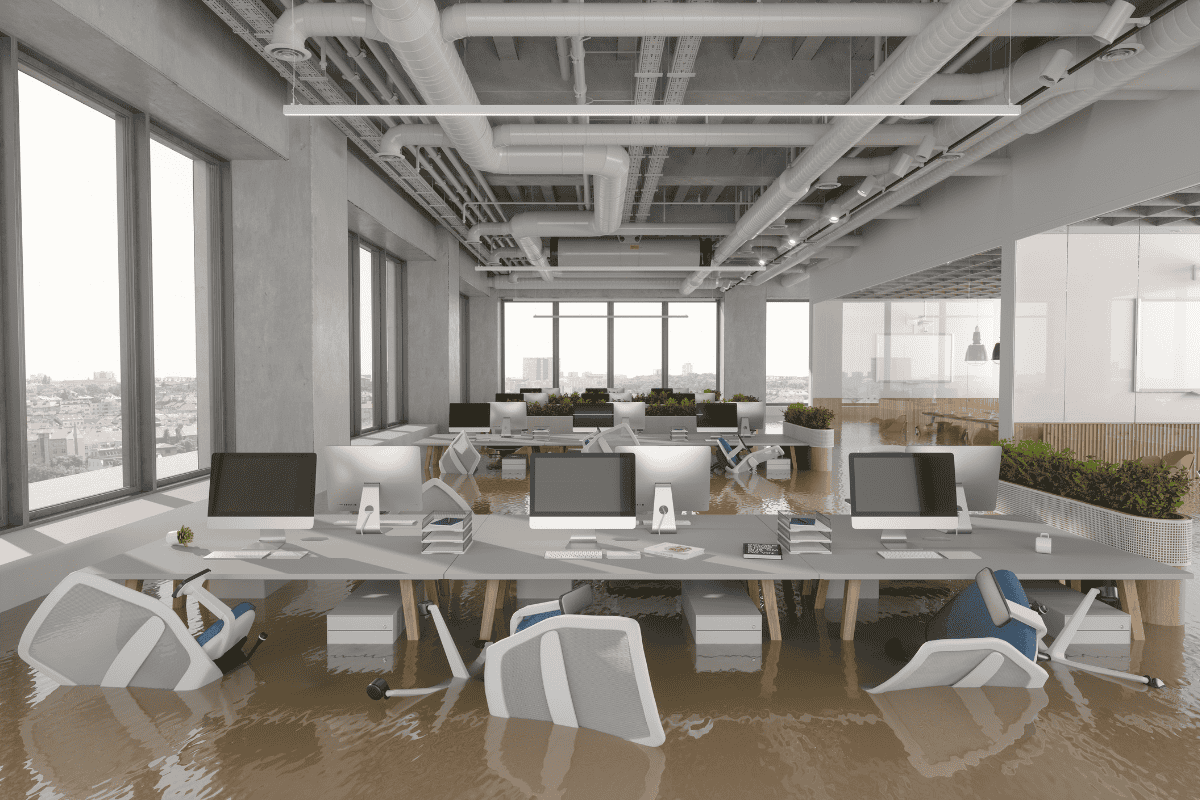Hurricane Debby packed a powerful punch up and down the East Coast last week, striking the Florida Panhandle as a Category 1 storm before it weakened and slowed down over Georgia. Heavy rainfall, gusty winds, several confirmed tornadoes, and moderate damage extended up the Southeast coast into the Carolinas, where 15-25 inches of certain coastal counties.
After that, the storm turned north and raced through the Mid-Atlantic and Northeast, worsening flood threats in already-inundated areas like New York and Vermont. While the primary focus since Debby’s landfall has been protecting property while keeping people safe and dry, clean-up will begin and floodwaters will recede. That’s when businesses will need to assess the scope of damage and begin recovering from another natural disaster.
In an increasingly interconnected world, where computers and technology systems are an integral part of our daily lives, protecting these assets from unforeseen disasters is critical. As hurricane season continues to heat up in the Atlantic Ocean and other parts of North America deal with severe weather threats, it’s impossible to ignore the threats to physical and digital infrastructure.
CMIT Solutions has spent the last three decades providing managed services to help businesses across North America safeguard their systems and protect their data from natural and manmade disasters. Over the years, we’ve learned a few lessons about the importance of proactively mitigating risk and ensuring business continuity. Here’s what we regularly share with businesses that find themselves in harm’s way, both before a natural disaster strikes and after the immediate threat is over:
Make sure you know where critical business data is stored.
In the face of flash floods and other natural disasters, physical infrastructure like computers, servers, and offices often bear the brunt of destruction. This threatens the integrity and accessibility of critical data stored on computers, hard drives, and even in cloud storage applications if power and Internet outages occur. If your business wants to avoid disruptions to financial records and customer data, it’s time to take data backup seriously. Waiting to consider this important step until after a disaster strikes can lead to irretrievable data loss, compromised privacy, operational disruptions, and financial setbacks that stretch into the future.
Develop, implement, and test disaster preparedness and business continuity protocols.
No matter where your business is located, you should have confidence in your ability to maintain operations during and after a disaster. Technology is crucial for the day-to-day survival of most modern organizations. Without a robust disaster preparedness and business continuity plan in place, your communications could go down—along with any chance of processing business transactions and bringing in revenue. Coming up with a plan in advance to safeguard computers and technology from flash floods and other disasters is a must to avoid extended downtime, lost productivity, damaged reputations, and potential closure.
Make a plan for disaster recovery that takes every step into account.
Recovering from a disaster can be an expensive endeavor—especially for small to medium-sized businesses. The costs associated with replacing damaged or destroyed systems can be significant, and the potential loss of revenue during a recovery period only compounds the problem. Implementing straightforward preventive measures in advance—raising equipment off the ground, using waterproof enclosures, and creating off-site data backups—is the first step to minimizing the financial impact of disasters. Understanding the ins and outs of your insurance coverage before disaster strikes is also important. The bottom line is that you should know how your safety net will work in case of unforeseen events.
Be careful with your information in the wake of a disaster.
The protection of private business data is incredibly important. Believe it or not, many hackers and bad actors will use natural disasters like flash floods, fires, or hurricanes to try and execute elaborate schemes involving cybercrime or identity theft. Flooded or damaged computers and hard drives must be disposed of properly to eliminate the threat of data loss or unauthorized access. Devices and systems that remain in use should be protected by end-to-end data encryption, strong passwords, and access controls, preserving privacy and trust in the event of a disaster.
If you weather a storm OK, turn next to your community.
Natural disasters impact small businesses, larger organizations, and the broader communities in which they exist. A robust and interconnected technological ecosystem is vital for effective emergency response and recovery efforts. From coordinating relief operations to disseminating critical information, computers, smartphones, Internet connections, and other technologies play a central role in disaster management. Protecting these assets ensures that people can communicate during crises, property can be protected in the wake of damaging storms, and communities can bounce back faster and restore normalcy in the aftermath of a crisis.
Hurricane Debby’s unpredictable path and heavy rainfall issued a stark reminder of how vulnerable many communities are to natural disasters. Protecting business data and technology systems should be a priority before a crisis strikes. That way, your company can maintain stability and resilience in the face of immense challenges.
CMIT Solutions has decades of experience helping businesses of all sizes to adopt proactive measures, implement disaster preparedness plans, execute data backup strategies, and enhance cybersecurity before, during, and after emergencies. We can minimize the impact of flash floods and other disasters on digital infrastructure and help you rest easy knowing that computers are safe, data is secure, and the path ahead leads to a more resilient and connected future.
Contact us today if you need help preparing for or responding to a natural disaster.






